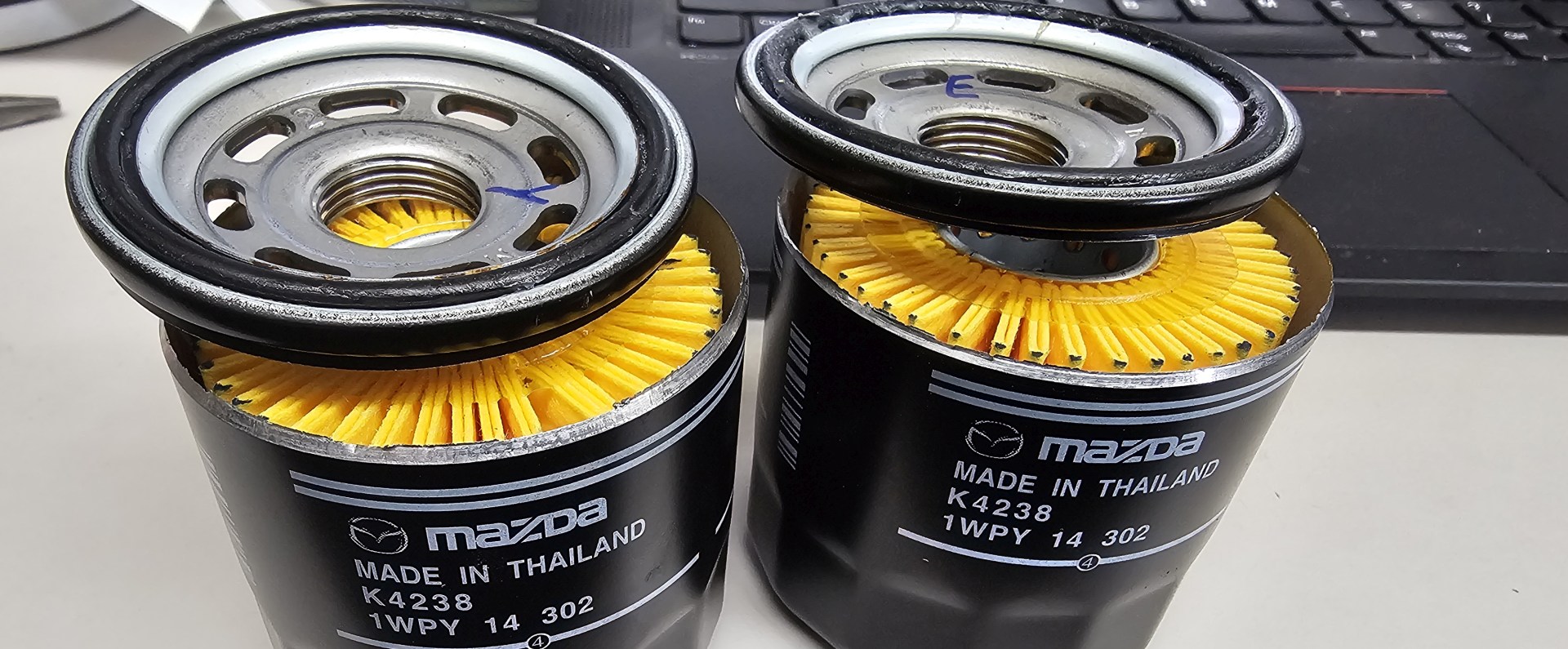These Mazda oil filters look and fit the same. Is there really a difference between these two filters? If so, what is it?
We’re going to cut two brand new filters open on our lathe and find out.
In the past Mazda has issued service bulletins stating that even though they make some oil filters that are apparently identical on the outside, the inside of the filters are different and using the wrong one will cause engine damage.
While no such TSB exists for these two filters, we’ve been using the 1WPY-14-302 on the 2021 Mazda vehicles that call for it. They’re the same price, so there’s no reason not to use the right filter. Still, you’ve got to wonder what the hell Mazda was thinking when they made two filters that look and fit identically with nearly identical part numbers. It’s really easy to grab the wrong box.
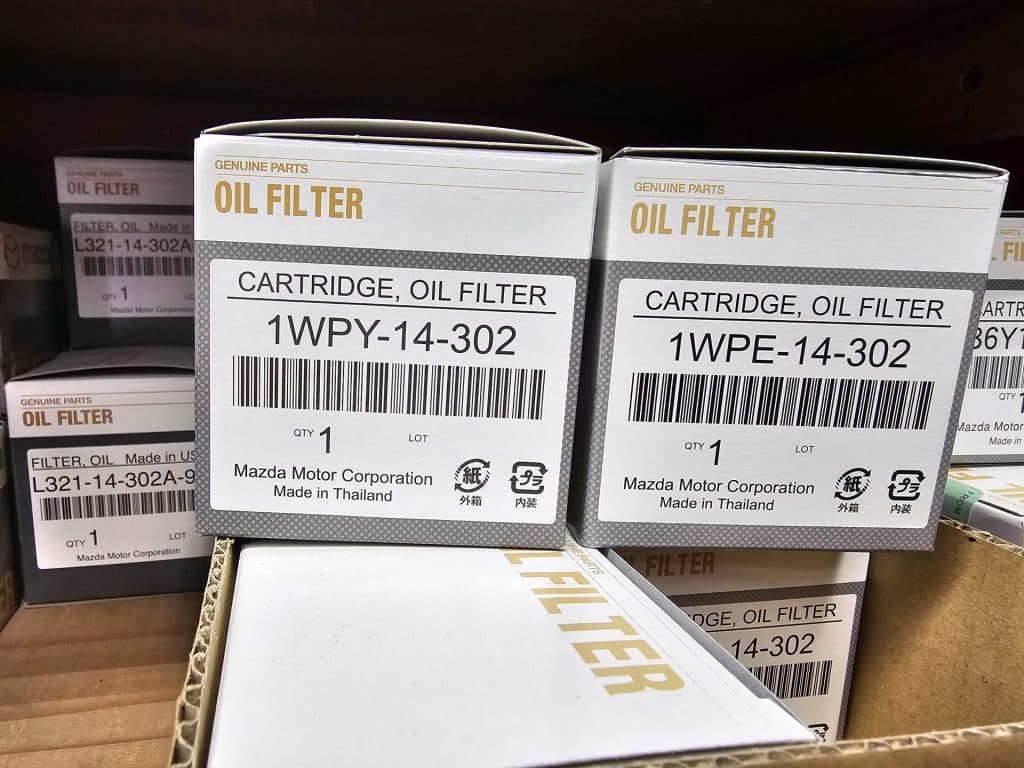
As you can see, the boxes are pretty easy to mix up. We’ve had our dealer deliver a case of one when we ordered the other, and we’ve had to remove filters and throw them in the trash after installing the incorrect one.
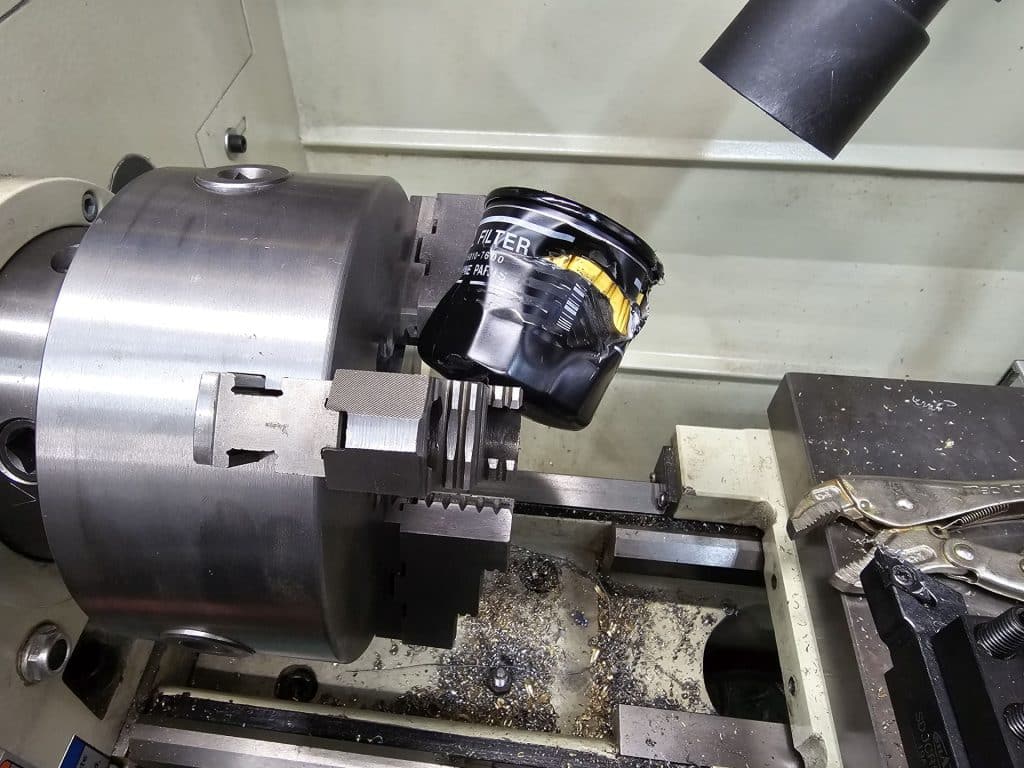
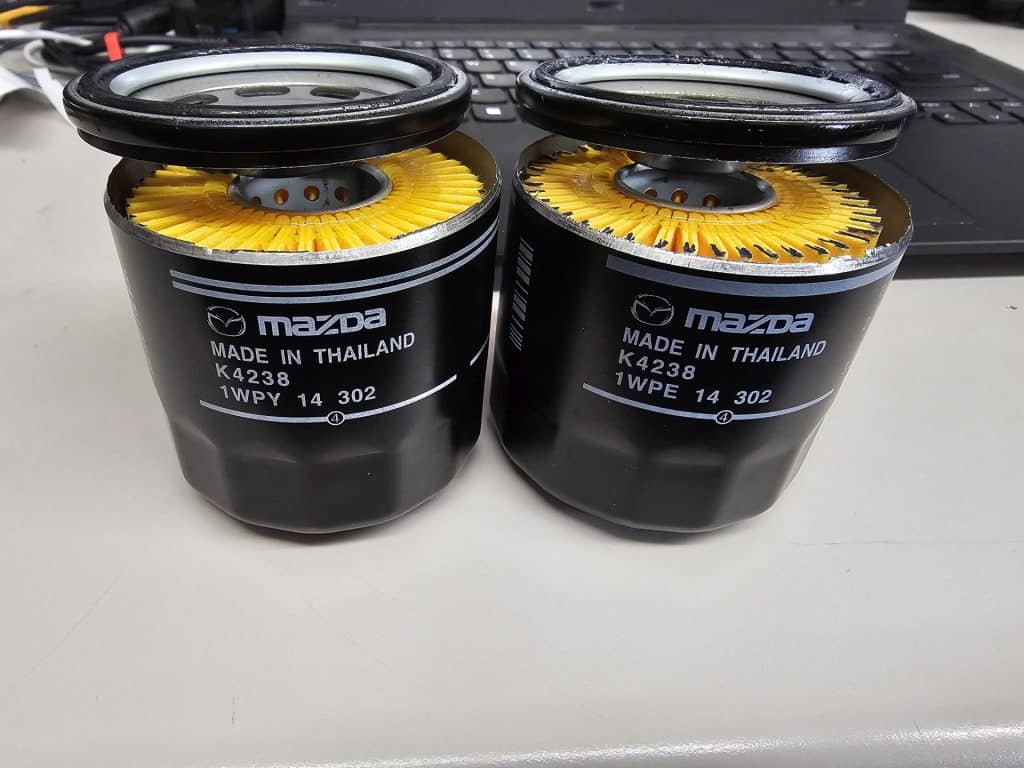
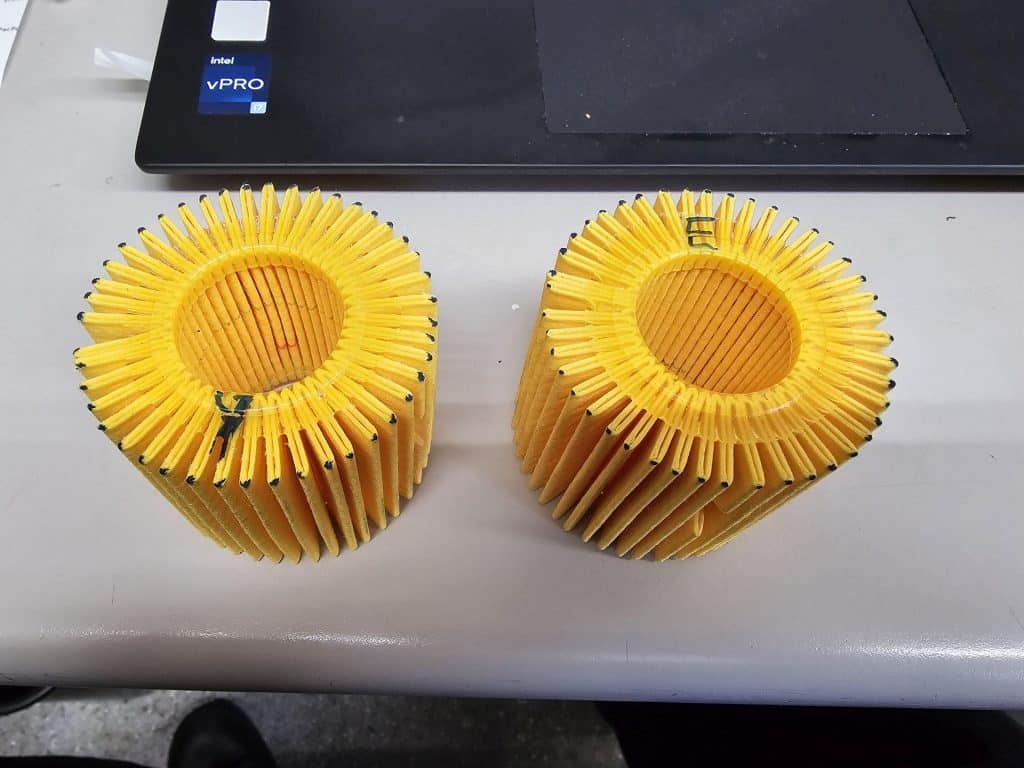
The most obvious way they could be different is the filter element. There is a difference, but it’s very small. The 1WPY has 44 folds, which are 16mm deep and both are 50mm high. The 1WPE has 43 folds but the dimensions are the same otherwise
I cut a chunk of the filter paper out so I could measure a single layer. The thickness of the filter media is 0.72mm thick on both Mazda oil filters.
I also checked the filter paper under a microscope. As far as I can tell it’s the same stuff.
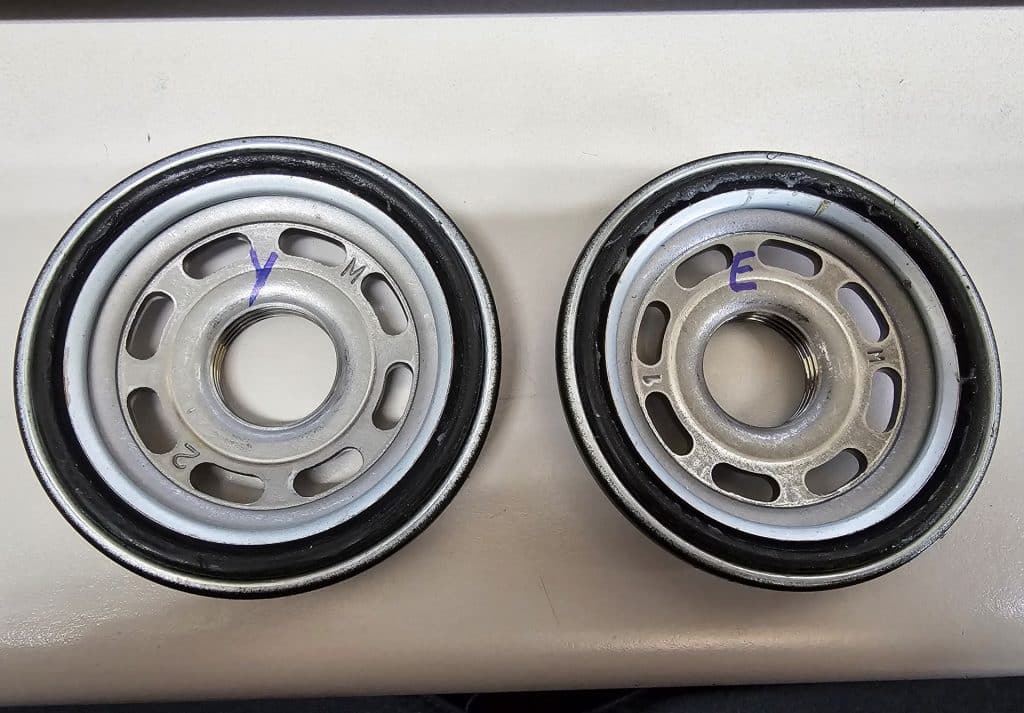
Is there a difference in the mounting flange? Not that I could find. The thread size and pitch is identical. There are 8 holes in each and the holes measure 4mm x 10.3mm on both.
It’s notable that there’s no anti-drainback valve, which seems kind of cheap, but maybe all of the vehicles have something built in for that. I didn’t do any research on this. The fact they’re identical is good enough for today’s project.
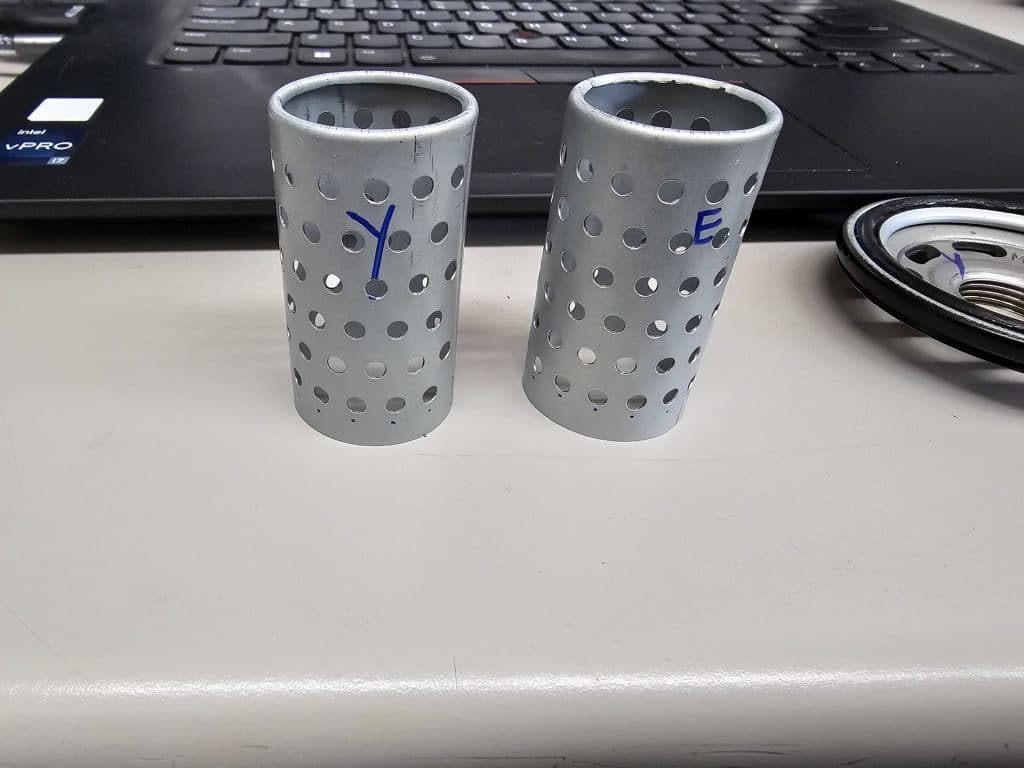
So is the center support different? Nope. Each has seventy eight 2.85mm holes

It’s possible that the by-pass valve is different. The valve and opening are the same size, but the spring may be a different rate
After a bit of thought I decided to test it like a valve spring. I don’t have a valve spring tester (and this spring would probably be too light and out of its range anyway), but I do have a scale and a dial indicator.
I set the valves on the scale to measure one at a time. While pushing the valve open I used the indicator to measure 1mm of movement, then checked the scale’s reading. If the springs are the same, the reading should be the same. The 1WPY’s spring is 3300 grams @ 1mm of compression. The 1WPE’s spring is 2200 grams @ 1mm of compression. This is a pretty big difference.
So what is a by-pass valve? A by-pass valve is a safety measure. If motor oil can’t flow through the oil filter, the pressure will increase behind the valve and will push the spring open so the engine doesn’t run dry.
Why wouldn’t oil flow through the filter? The usual reason is lack of maintenance. The oil filter captures debris and eventually the debris clogs the filter and oil can no longer flow through it.
Another reason the by-pass valve might open early is that motor oil can be thick when the weather is cold and the car is first started. The thick oil is slow to push through the filter paper so pressure builds and the valve opens.
Why would the older Mazda cars use a lower pressure by-pass valve? I don’t really know, but I’m going to take a guess.
Typically, older cars use thicker oil and more modern cars use thinner oil. Modern cars also use synthetic oil which allows for better flow when then weather and engine are cold. Thicker oil will have a harder time flowing through the oil filter when cold. One often stated reason for the use of an oil by-pass valve is that it allows oil flow on cold starts when the oil is very thick.
So here’s my theory (which is quite possibly wrong). Maybe Mazda is more worried about keeping debris out of the oil than oil flow on cold start, since the motor oil is now very thin synthetic. To make sure no unfiltered oil is delivered, they increased the by-pass valve blow-off pressure so the valve only opens when the filter is truly clogged; they’re no longer worried about cold start up.
Ok Cunningham’s Law, work your magic.
Player 3 – AutoExe Oil Filter For Mazda
After I posted this page, I got and email from a Mazda enthusiast who was interested in AutoExe oil filters. He mentioned a YouTube tear-down video he’d seen but wanted to know if I’d do the same testing on the AutoExe filter that I did on the Mazda oil filters. He offered to buy one and send it to me, so I said sure. Generally, I’m a big fan of using OE filters, but at times there are OE oil filter shortages, and it always a good idea to examine your beliefs periodically.
Here’s the email with the links to the YouTube video and AutoExe website:
Hello Art’s Automotive,
My name is Athila and I have a 2020 Mazda 3.
https://www.instagram.com/project_mahnong
A friend recently shared your blog post about Mazda filters in our Facebook group:
https://artsautomotive.com/art-icles/articles-for-the-curious/mazda-oil-filters-1wpe-14-302-vs-1wpy-14-302/
https://www.facebook.com/groups/4thgenmazda3 (need to join the group to view the posts, I think)
The reason I’m emailing is because I came back from Japan a few weeks ago and purchased a few parts from AutoExe, including some of their oil filters. (If you don’t already know, AutoExe was founded in 1997 by ex-Mazda engineers, and some members of the Mazdaspeed team.)
https://autoexe-store.com/en-us/products/s-p-rts-oi-l-f-l-hand-r-ma-3
https://www.autoexe.co.jp/en/?page_id=4960
(if the pages are in Japanese, open the links in Chrome and use the translation feature)
I wanted to ask that if I send you one of these brand new AutoExe A00182 oil filters, if you would be interested in writing up another blog post where you cut it up, measure it, and analyze it the same way you did for the 1WPE-14-302 and 1WPY-14-302 filters you wrote about previously?
There’s lots of enthusiasts in the Facebook group, so I think the info would be useful and interesting to them. I’d also love to share the new blog post you write about it if you’re interested.
One of the members, Justin Freeman, is also a tuner, and has tuned the ECUs for several members in the Facebook group domestically and worldwide. He has a small YouTube channel where he posts about parts and upgrades to improve the performance of the Skyactiv platform. He got one of these AutoExe filters and cut it up as well, but I don’t think he was able to analyze it the same way you did.
Please think about it and let me know if you might be interested. I live in Santa Rosa so I can send the filter to your shop in Berkeley via FedEx or USPS.
Thank you, and looking forward to hearing back!
AutoExe Mazda Filter Teardown
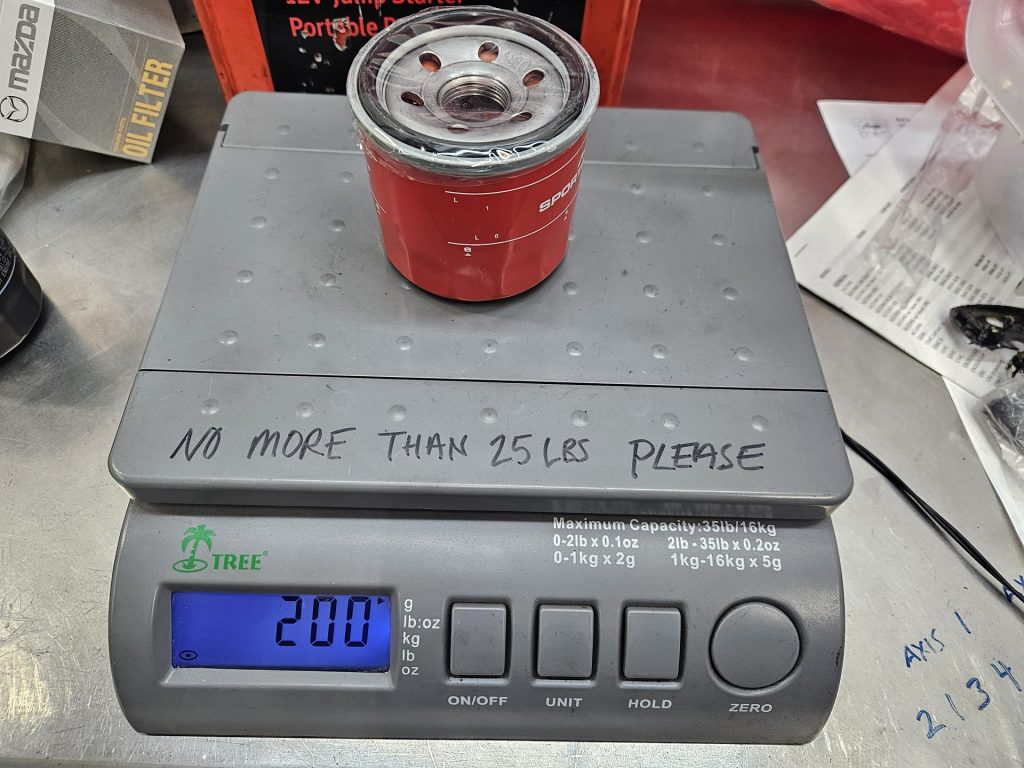
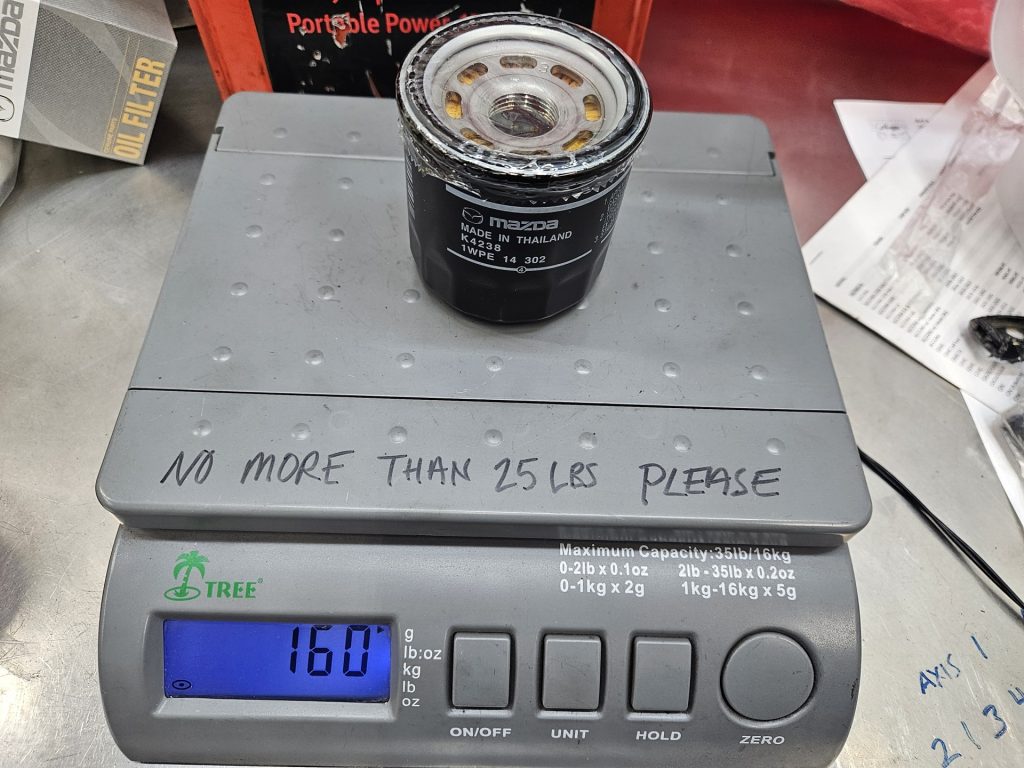
The very first thing I noticed about the AutoExe filter is that it was heavy. I didn’t bother weighing the filters when I did the 1WPE / 1WPY comparison because they felt normal. This one definitely has some heft. Anyway, as it turns out, the AutoExe filter is 25% heavier than the Mazda 1WPE filter. Does more weight mean better filtering? I wouldn’t imagine so, but heavier products always feel like better quality.
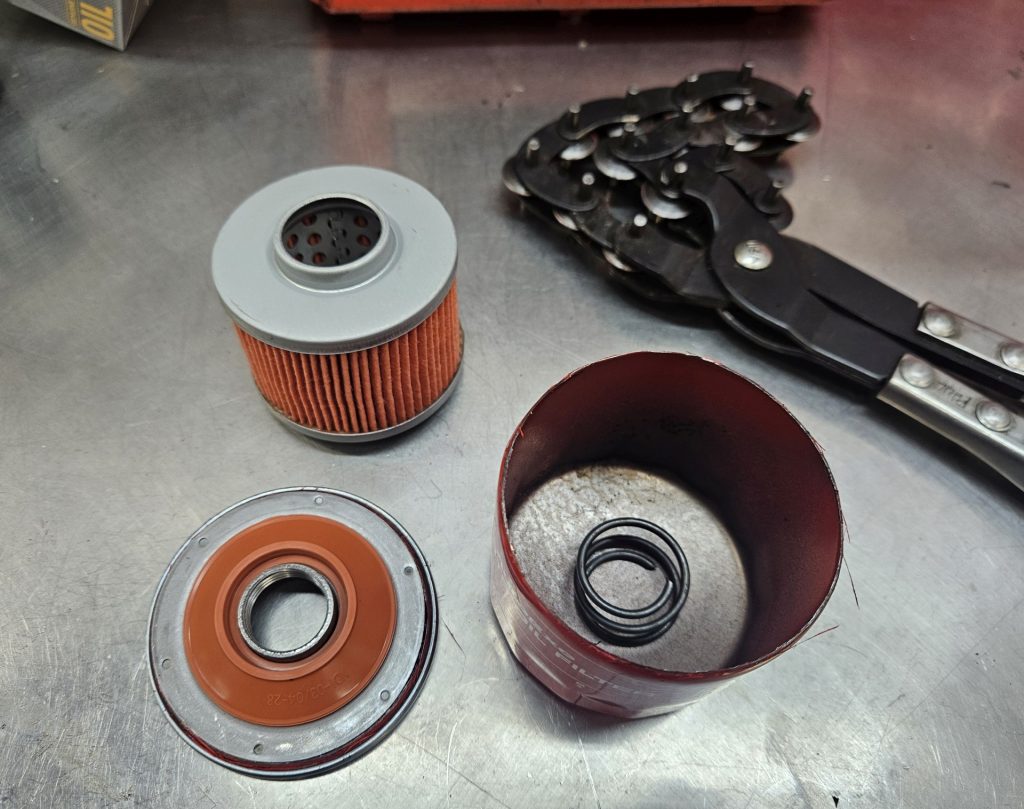
The AutoExe filter is a different design than the two Mazda filters. The pressure release spring is between the housing and the filter assembly. If the filter becomes completely clogged due to lack of maintenance, the filter cartridge will compress the spring and allow motor oil to bypass the filter.
I measured the spring pressure at 1mm of compression, just like I did with the Mazda filters. At 1mm of compression, the scale reads roughly 2200 grams, so it’s more similar to the 1WPE filter.

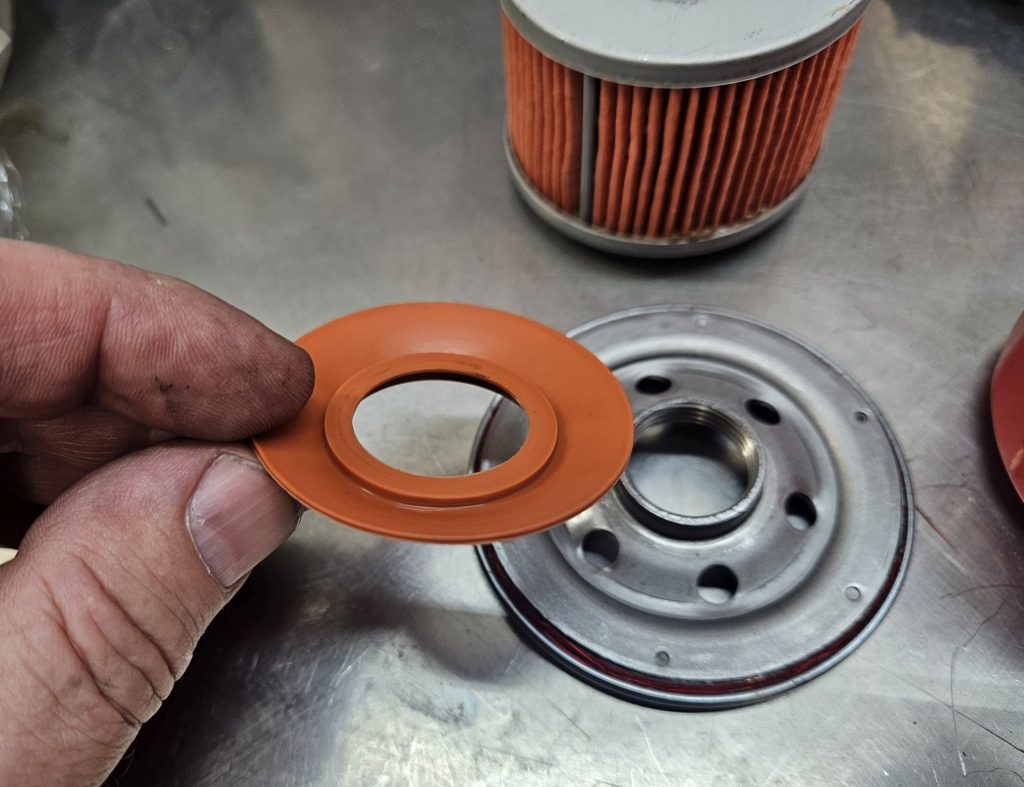
There are a couple of differences between the Mazda filters and the AutoExe filter. First, there are a couple of very strong magnets glued to the filter cartridge. Presumably these will collect any ferrous debris and reduce the load on the filter. Ideally there wouldn’t be any ferrous debris in your oil. With normal engine wear you’d expect to see softer bearing material, not steel. When there’s steel in your oil, you’ve got problems. Regardless, it certainly won’t hurt and may offer some extra protection.
The other difference is the anti-drainback valve. The Mazda filters don’t have this feature at all. All of the Mazda configuration I can think of have the filter sitting with the inlet/outlet facing up, so oil is held in the filter by gravity and the inertial of the oil held in the filter is working to prevent drain back into the outlet, at least that’s what I’m guessing. I’m not an engineer or a physicist.
Regardless, the AutoExe filter has an anti-drainback valve and the genuine Mazda filter doesn’t. It certainly won’t hurt and it’s possible it offers a real benefit. The valve material is very nice too. It’s either Viton or silicone, both of which are top tier materials for this application. I’m leaning toward Viton based of the feel and stiffness, but I don’t really know. I’m sure it’s not nitrile or neoprene, which are lower quality choices.
Filter Media
Ok. So, we’ve covered the design differences and the upgrades. What about the most important part – the filter media?
The Mazda filter media is 50mm high and the folds are 16mm deep. I counted 43 folds on the outside of the filter but didn’t count the inner folds. I assume they are plus or minus one of the number of outside folds. The thickness of the filter media is 0.72mm which wouldn’t have an effect on the surface area, but I assume it would have an effect on how much debris the filter can absorb before becoming saturated.
The AutoExe filter has 34mm high media and the folds are 14mm deep. I counted 67 folds on the outside of the filter. The filter media is little thicker at 0.8mm. I had Perplexity do the math. Here are the results.
The Mazda filter has a larger surface area but slightly less volume compared to the AutoExe. The Mazda’s surface area is 137,600 mm², while the AutoExe is 127,568 mm² — a difference of 7.9% in favor of the Mazda filter. However, the AutoExe filter’s volume is 102,054 mm³, exceeding the Mazda’s 99,072 mm³ by 3.0%.
So, a difference of 3% in favor of the AutoExe. However, I’m sure if I were to repeat the experiment the leader would alternate back and forth with each test. And I’m sure my measurement precision isn’t withing 3%. I’m going to say the filter media, while differently shaped, it equal between the filters.
